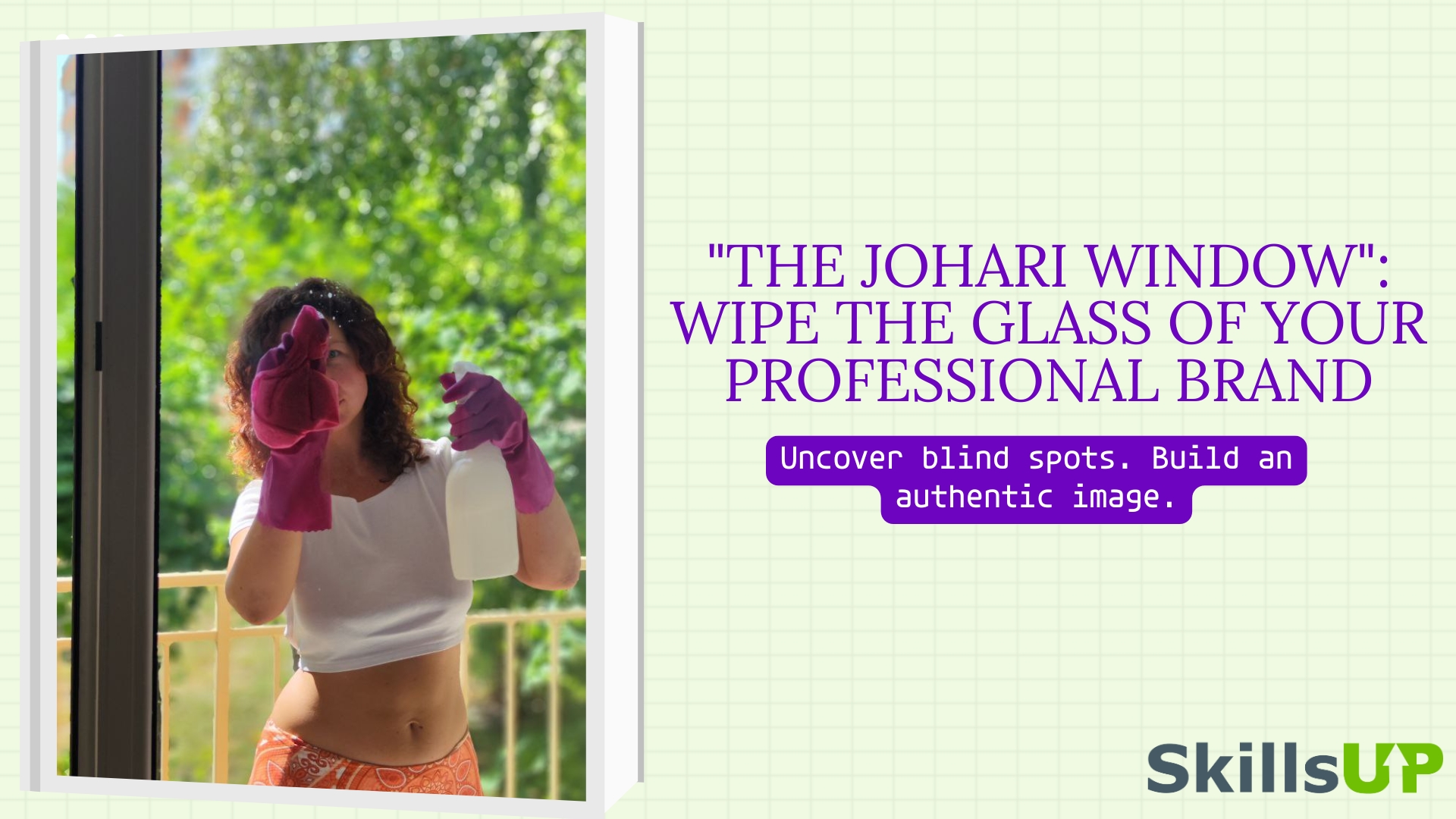How does the Johari Window help develop a professional brand?

"Who am I as a professional?"
“They offer me a leadership role, but I don’t feel confident the team will accept me…”
“We want to promote several employees, but the management/client doesn't see them as ready for promotion yet. How can we position them better?”
I periodically receive these and similar questions from clients. And although it’s not always visible at first glance, they’re all about a professional brand — the image created in the work environment.
The Johari Window is one of the tools that sheds light on our professional brand. A simple model that helps to see yourself from four angles and stay on track.
Fun fact: the tool is named after its creators — Joseph Luft and Harry Ingham. The model is based on four zones, or "panes", that we can make more transparent.
First zone – “Open Self”
This is what I know about myself, and what others see.
Questions for yourself:
- What are my strengths that I easily demonstrate?
- What do I often hear in feedback—and agree with?
- I know what qualities others value in me. These are:...
- What habits and traits do I typically show at work?
🧼 Wipe the glass — write down at least 9 qualities from your open zone.
Case from my team:
Oksana, Senior BA. During her performance review, she was praised for being structured and able to explain well. She considered this "just part of the job." Together we recognized: this is already a strong part of her professional brand.
She decided to use this quality more actively — started leading webinars and creating career guidance content for newcomers.
Second zone – "Hidden Self"
Here lies what I know, but others don’t.
Questions:
- What do I hide because “it’s not the right time” or “no one will understand”?
- What values do I not voice?
- What qualities do I not share with colleagues?
- What do I want to change in myself?
- What traits are seen only by close ones?
🧼 Wipe the glass — list 7 qualities from your hidden zone.
Client case:
Roman, a fitness coach. He completed a psychology course but kept quiet about it: “Not ready to sell myself.” We helped him add these topics to his social media — and suddenly, his posts on psychology brought in new clients.
So, the fitness trainer brand transformed into a mentor of body and mind.
Interesting thought: A brand is built not only on what’s already visible but also on what you choose to bring into the light.
Third zone – "Blind Spot"
This is what others see, but I don’t.
Questions:
- What annoys me in feedback?
- What do colleagues say that I don’t believe?
- What repeated “messages” do I hear from different people?
🧼 Wipe the glass — list at least 5 qualities from your blind zone.
Tip: regularly ask for feedback in different formats: a feedback survey, direct questions, anonymous polls, phrases like “what could I improve in our interaction?”
Case from my team:
Vlad is a great developer. He thought he maintained neutrality in communication, but clients said he was hard to negotiate with. Due to this “blind spot,” architectural tasks began going to others.
We worked through the feedback — Vlad started adding more explanations and proactivity. Instead of a dry “this won’t work” — “why it won’t and what alternatives exist.”
Fourth zone – "Unknown Self"
What I don’t know and others don’t know. But it exists.
Questions:
- What are my dreams to try something new, without expectations?
- What am I not yet, but feel curious about?
- What skills in others inspire me? Which of them could be possible for me?
- What skills or superpowers would I like to have?
- If there are other talents beyond the known ones—what would they be?
- What resources and abilities could pleasantly surprise both me and others?
🧼 Wipe the glass — list at least 3 possible qualities from your unknown zone.
Note:
This is where career changes, new roles, and creativity are born. Don’t fear this zone—it’s the growth zone. In consultations, we often look for this “space of experimentation”—without judgment.
How to integrate this into your brand?
- Audit your window—honestly go through all 4 zones and make each pane transparent.
- List what already is your brand, and what you want to add or highlight.
- Formulate actions and messages through which you want to position new competencies and qualities.
- Just do it!
A professional brand is not only “how others perceive me.” It’s a story about transparency, flexibility, and the courage to show different sides of yourself, to expand and develop your expert image. And yes — you can still surprise yourself. And that’s the thrill.
If you’d like to go deeper into your professional brand — join the program or personal mentorship. Especially for those who are entering a new stage: changing careers, starting a solo path, becoming a mentor or a leader.

